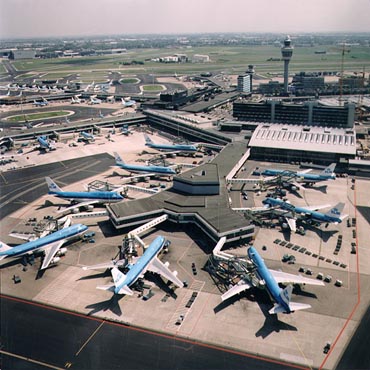
The holiday travel season is right around the corner, and this year’s travel season promises to busier than ever. This means more hectic check-in lines and longer waits at security checkpoints.There is, however, one way that traveling by air will become less hectic and frustrating: parking.
Frequent flyers have long considered parking the bane of their existence. It has often been frustrating to try to find parking close to terminals—sometimes it has been difficult to find parking at all! When you are rushing to catch a flight the last thing you need is to circle parking floors looking for an elusive open space.
Recognizing how frustrating it can be for travelers (and also recognizing that parking is an important source of revenue), airports across the United States are introducing cutting-edge parking technologies to make their parking facilities more customer-friendly and safer, while at the same time making them more competitive relative to independent satellite lots.
These technologies are designed to get travelers into open spaces and into terminals as quickly as possible. Other technologies are designed to get weary returning flyers into their vehicles and on their way home as conveniently as possible.
Airports are adding a number of cutting-edge technologies, including:
Parking Guidance Systems: Parking guidance systems use illuminated sensors to record whether a space is open or occupied and relays that information to parkers with a series of highly visible colored lights (green means available; red means occupied; blue means HP). Guidance systems also typically employ LED signs at the entrances of garages and on each floor indicating how many spaces are available.
Parking guidance systems can reduce the time it takes to find parking by as much as ½ hour in some garages. Many well-known airports, both large and small, have installed parking guidance systems in recent years, including Dallas’ Love Field, Dallas Ft. Worth International Airport, Tampa International Airport, and John Wayne Airport.
Frictionless parking: Frictionless parking is the latest technology strategy to be introduced to the airport industry. Frictionless combines a number of parking technologies that can include license plate recognition (LPR) technology and software, barcode readers, RFID technology, mag strip readers, and Bluetooth technology to allow travelers to enter and exit parking garages without stopping to pull a ticket upon entry or queuing to pay when leaving.
The system recognizes the vehicle when it enters the facility and automatically charges the driver. Frictionless parking systems can be extremely beneficial to travelers who are in a rush to make a plane or who are returning and are in a rush to get home. Raleigh-Durham International Airport is in the process of installing a frictionless parking system that will manage 70 entry and exit lanes and permit advance parking reservations.
Parking Reservations: Advance parking reservations are common at European and Canadian airports but are just now gaining traction in the U.S. Through these systems, travelers go online before driving to the airport and reserve a space in the parking facility that is closest to their terminal. They pay for a specific space and upon entering the garage are directed to that space.
Reservation systems provide incredible convenience for travelers, and they also generate vital utilization data that airports can use to better manage their parking assets and provide an even better parking experience for travelers.




